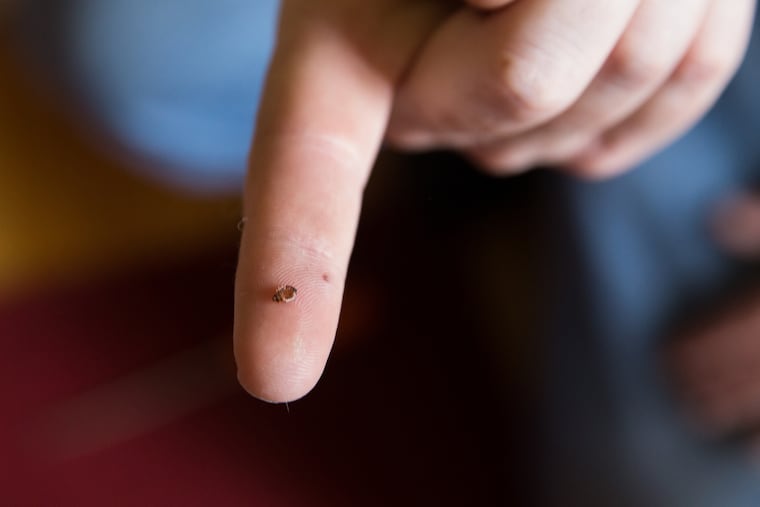What to know about bedbug prevention, treatment
Not all humans react to bedbug bites, but many report getting bites in lines, sometimes in rows of three.

Martin Overline started killing bedbugs overseas while serving in the Air Force in 1978. He went after the pests brought in by travelers coming and going from Frankfurt, Germany's Rhein-Main Air Base.
He's been in the business ever since.
Overline, who is president of the Pa. Pest Management Association and sits on the National Pest Management Association's board, representing veterans, provided some dos and don'ts when it comes to bedbugs.
What are bedbugs?
Bedbugs are wingless, bloodsucking insects about the size of an apple seed when fully grown. They typically bite humans while they're sleeping. Bedbugs hide in mattresses, bed frames, baseboards, outlets, furniture and carpets.
How to prevent bedbugs
Use protective covers to encase mattresses, consider buying interceptors, little white dishes placed beneath beds and other furniture to capture any active bugs.
While even clean homes can get the pests, it's good to avoid excess clutter and always inspect any secondhand furniture before bringing it into your home.
Be careful in hotels and avoid putting luggage directly onto beds.
How do I know if I have them?
Bedbugs nest in crevices of mattresses, along baseboards and inside furniture. They can live up to 18 months without food and tend to be most active during the summer.
Not all humans react to bedbug bites but many report getting bites in lines, sometimes in rows of three, and mostly on their legs, feet, hands and arms.
What do I do if I think I have them?
Don't sleep in another room, at a friend's house, or on the couch. You could transfer the bugs and spread the infestation.
Don't immediately haul your mattress through your apartment. That could spread them in your house.
Don't spray pesticides or try to treat the problem yourself.
Do call a qualified exterminator to inspect and consult on the issue and notify your landlord if you are a renter.
How are they treated?
Various treatments exist, including heating, steaming, powder or sprays. A typical treatment will cost $500 to $2,000 depending on the square footage of the home or apartment. A pest management professional will guide you on what furniture might need to be thrown out and what can be treated.
All clothing and material objects will need to be bagged and run through a dryer. Most companies suggest you vacuum before exterminators arrive. (Use a vacuum with a removable bag and seal and throw it out immediately after using.)
Who is responsible for treating bedbugs?
Philadelphia does not have a policy that explicitly states who is responsible for bedbug infestations between landlords and tenants. Often it's spelled out in the lease. Homeowners who suspect the problem originated with a neighbor also have limited options because the Health Department doesn't investigate cases of bedbugs and L&I doesn't typically issue violations solely for bedbug infestations.
Don’t panic
Bedbugs have not been proven to transmit any diseases and, although uncomfortable and a nuisance to deal with, the bites tend to go away in several weeks.
"There's a lot of shame associated with bedbugs," Overline said. "But anybody can get them. Stay calm and come up with a plan. There's a lot of misinformation out there on how to deal with them and that just makes the problem worse."